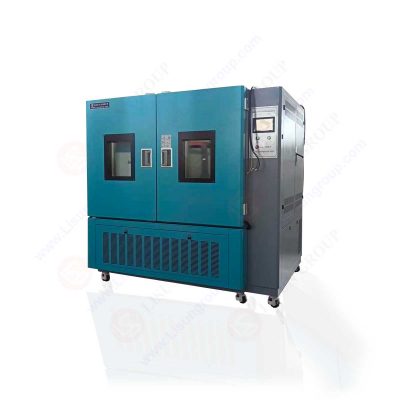

As a key component in the automotive power system, the performance of the drive solenoid valve directly affects the power output, fuel efficiency, and overall operational stability of a vehicle. To ensure that solenoid valves maintain excellent performance under various extreme environmental conditions, high-low temperature cycling tests are of paramount importance.
Background of High-Low Temperature Cycling Tests
High-low temperature cycling tests simulate real-world conditions by repeatedly exposing solenoid valves to cycles of high and low temperatures. These tests evaluate the valves’ endurance and stability under varying temperature conditions. High-temperature tests typically simulate scenarios where vehicles are exposed to extreme heat, such as prolonged sun exposure in summer or extended high-load operation. Conversely, low-temperature tests replicate conditions where vehicles operate in cold environments, such as starting and running in winter’s low temperatures. LISUN Temperature Humidity Chamber | Thermal Chamber | Climate Chamber simulate different climatic conditions, such as heat-endurance, cold endurance, dryness-endurance and humidity-endurance which defines the performance of material. By testing the product under different climatic conditions to see whether its performance can meet the intended requirements. It is widely used to test the CFL/LED, electricity products, automative cars, home appications and mobiles. This series of aging test chamber is suitable for the reliability test of industrial products. It has the characteristics of temperature control precision and wide control range.
High and Low Temperature Humidity Chamber
Importance of High-Low Temperature Cycling Tests
Ensuring Vehicle Safety in Various Environments Vehicles operate under diverse environmental conditions, and temperature variations can significantly impact their components. High temperatures can cause materials to expand and age, while low temperatures can lead to contraction and brittleness. If a solenoid valve fails under extreme temperatures, it could result in a power system failure, compromising driving safety. High-low temperature cycling tests verify the reliability of solenoid valves under these conditions, ensuring their safety in actual use.
Improving Fuel Efficiency The performance of solenoid valves directly affects a vehicle’s fuel efficiency. In high-temperature environments, solenoid valves may overheat, leading to slow responses or failures; in low-temperature environments, they may become sluggish due to viscosity issues. These problems can result in inaccurate fuel injection, increasing fuel consumption. High-low temperature cycling tests optimize the performance of solenoid valves across different temperatures, enhancing fuel injection accuracy and improving fuel efficiency.
Promoting Technological Innovation and Development High-low temperature cycling tests are crucial in automotive technology research and development. These tests help identify performance limitations of solenoid valves under extreme temperatures, driving engineers to innovate and improve technologies. For example, addressing high-temperature durability issues might lead to the development of new heat-resistant materials; solving low-temperature sluggishness could result in new lubrication techniques or optimized structural designs. This not only enhances solenoid valve performance but also advances overall automotive technol
Implementation Steps for Low-Temperature Cycling Tests
High-low temperature cycling tests generally involve the following steps:
1. Preparation Phase Select solenoid valve samples that meet the test requirements and prepare the high-low temperature testing equipment. Ensure that the equipment can accurately control the temperature range and the rate of temperature changes.
2. Testing Phase Place the solenoid valve samples in the testing equipment and conduct tests according to the preset temperature cycling curve. Typically, multiple high and low temperature cycles are set up, each including high-temperature holding, cooling, low-temperature holding, and heating phases.
3. Performance Evaluation After completing each temperature cycle, evaluate the performance of the solenoid valve, including response time, sealing effectiveness, and durability. Record the test data and compare it with the standard requirements.
4. Data Analysis and Improvement Analyze the test data to identify performance trends and potential issues in the solenoid valve during the high-low temperature cycles. Based on the analysis, make design optimizations and material improvements to the solenoid valve and conduct additional tests to verify the changes.
Conclusion
High-low temperature cycling tests are a crucial method for ensuring the stable performance of automotive drive solenoid valves under various extreme environmental conditions. This testing allows for a comprehensive assessment of the solenoid valve’s performance and enables targeted optimization and improvement, enhancing vehicle safety and fuel efficiency. Additionally, high-low temperature cycling tests provide important insights for automotive technology innovation and development, contributing to the ongoing advancement of the automotive industry. Given the increasingly complex operating environments and rising performance demands, high-low temperature cycling tests are especially important. They not only ensure user safety but also enhance the technological competitiveness of automotive manufacturers. https://www.lisungroup.com/news/technology-news/the-importance-of-high-low-temperature-cycling-tests-for-automotive-drive-solenoid-valves.html
.jpg)
Comments
Post a Comment